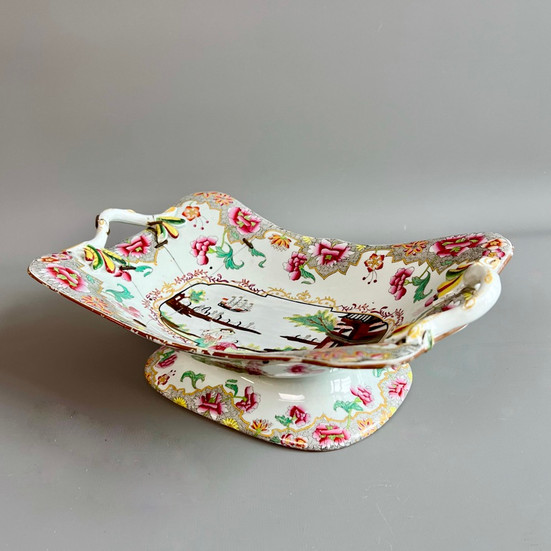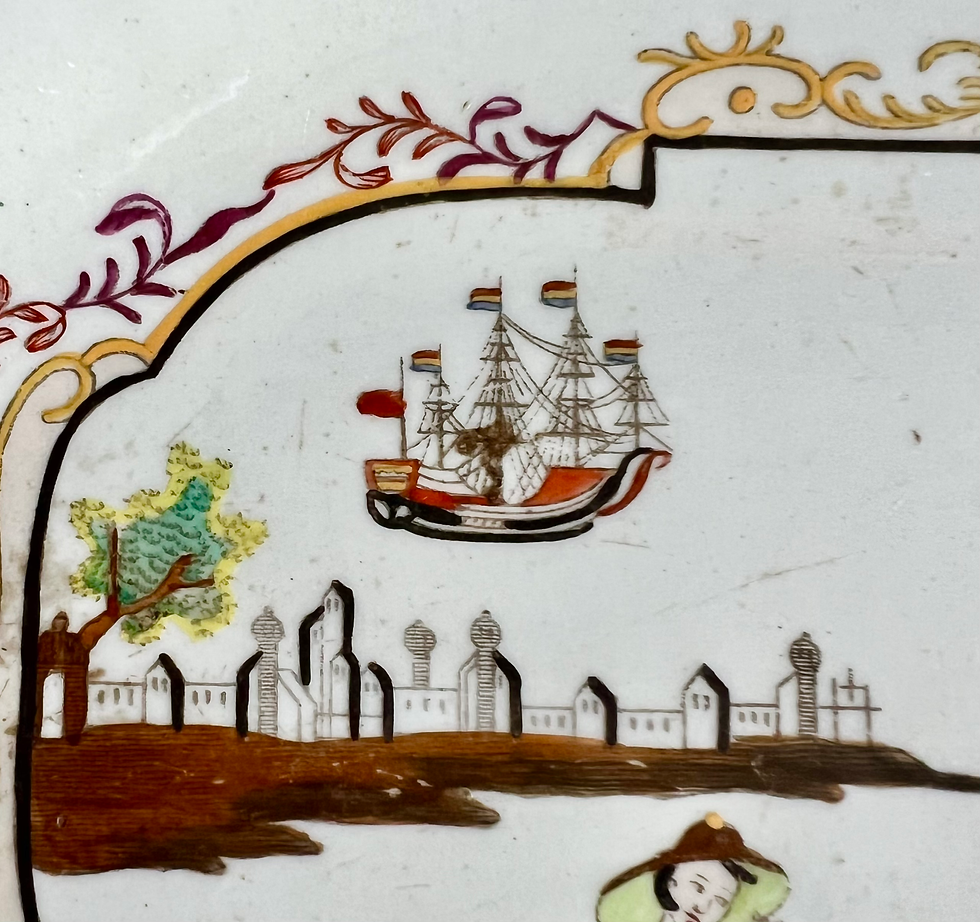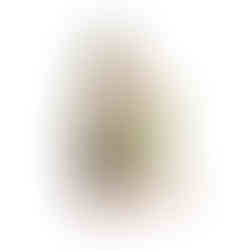Search
Tall tales
- willa

- Oct 11, 2024
- 3 min read
Updated: Dec 21, 2024
Today a tall tale... of a tall ship. In fact, of the famous Ship pattern by Spode - not just one item, but a whole dessert service.
This is a beautiful service made by Spode between 1813 and 1822, consisting of a centre piece, a lozenge shape dish, four shell dishes and ten plates. The service is made of Stone China and decorated in the famous and desired "Ship" pattern no. 3133, which was first brought out in the year 1813. This is one of the more famous and also rare transfer printed patterns by Spode.
A bit of history on the transfer print patterns... Blue on white decorations were done in East Asia for many centuries, and were made popular in the West by the Dutch Delftware potters in the 17th Century. In about 1800, Spode created a transfer printing process that could mass produce beautifully decorated blue and white wares, making this a very common and desired choice of tableware for the two centuries to come. Potters all over Britain quickly started to make use of this new technology and copied the famous Spode patterns. Once the blue on white transfers had caught on, Spode started to print in colour; mostly printing in one colour (in this case: brown) and then filling in the other colours by hand. This way, they could offer wonderfully colourful dinner services at a much lower cost, as they needed only a skilled engraver for the plate that provided the outline of the image, and the transferring and colouring could be done by less skilled people. These were often women and apprenticed children.
The image on this service is a very famous one, and one of the most desired of the Spode patterns. It is of a mother and child with a European tall ship in the background - they look like they have waved good bye to the ship and are in conversation - the boy seems to be telling his mother a tall tale. Apart from the beautiful tall ship, there is also a typical European trading post in East Asia in the background - this plate clearly celebrates the lively trade between East and West at the time.
The pattern is a copy of an 18th Century Chinese pattern and it is possible that this is the Kanton river, now Guangzhou, where Chinese export porcelain was painted and prepared for export to Europe. The border of the plate, which has became very popular in its own right and became widely used in combination with other patterns, is called the "Ship Border" after this original image. It is itself a classic Chinese pattern of beautiful flowers against a backdrop of little waves, referring to the sea.
This service is made of Stone China, which was Spode's recipe for very strong pottery with a high percentage of Cornish rock, which gives it he beautiful greyish hue. This is strictly speaking not porcelain but earthenware; however it is extremely strong and therefore was a popular choice for dinner services. Stone China was used between 1812 and 1822; it was then improved and called New Stone China. Pattern 3133 is almost identical to pattern 3067, which was brought out a little earlier, and has an ever-so-slightly differently colouring.
Apart from all this wonderful history, this service is exceptionally pretty and very usable. It is entirely free from damage and crazing, except one break: the central comport has been shattered at some point, and was put back together with staples (or rivets); a very effective 19thC method of porcelain repairs that makes the item completely safe to use. I wish these repairs were still done today, as they are charming and super effective!
An image of the very similar Ship pattern no. 3067 can be found in plate 288 and colour plate 9 of Leonard Whiter's book "Spode".
Where to find things
You can find lots of dessert services on my website, and you can find all my available stock here. If you always want to see the latest additions, follow me on Instagram... I post pictures and a story several times a week.
Happy weekend, and go tell someone a tall tale (perhaps of a tall ship)! ⚓️⚓️⚓️
This week's treasures:









































































Comentários